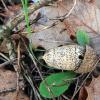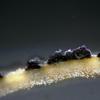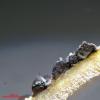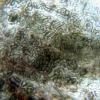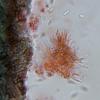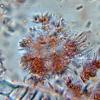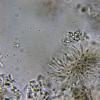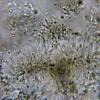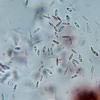
25-02-2023 09:24
Marja PennanenHello folks, last september I collected these tin

24-02-2023 19:21
Blue-greeen synnemata up to 0.5 mm high growing on

22-02-2023 13:37
me mandan la muestra seca de Galicia (España) rec

22-02-2023 16:32
Hola.Un presumiblemente hongo parasitando unos eje

22-02-2023 15:37
Dirk GerstnerHello all, What's colouring the wood here? I have

22-02-2023 10:26
Margita KovácsováHello. Could someone please send me this publicati

21-02-2023 20:53
Dirk GerstnerHallo zusammen, ich habe diesen 0,7 - 1,8 mm "Haar

19-12-2022 11:33
 Nicolas VAN VOOREN
Nicolas VAN VOOREN
Hello.Is there anyone who can have access to this
Some small pycnidia sprouting abundantly on an acorn on the ground.
Blackish in color like grains, very superficial, poorly adhered to the substrate, with a size between 154.54 to 219.7 µm. wide and with a height of between 70.74 and 123 µm.
Hyphae from the wall of the perithecium are heavily pigmented brown and have a labyrinth-like arrangement.
Cylindrical conidiogenous hyphae with measurements of (10.7) 11 - 22.1 (24.8) × (1.6) 1.7 - 2.6 (3.6) µm.
Cylindrical conidia, many of them tapering, with guttulas inside and measurements of:
(6.7) 7.5 - 9.2 (10) × (2.1) 2.2 - 2.9 (3.4) µm
Q = (2.2) 2.6 - 4.3 (4.6) ; N = 40
Me = 8.2 × 2.5 µm; Qe = 3.3
I understand the difficulty of identifying species like this, but given the specificity of the host, perhaps there is someone here who knows it. It's just that I have the feeling that I've seen it before somewhere, but my memory is no longer enough.
Thank you very much in advance.
Kind regards.

Have you looked at Phomopsis glandicola? Conidia look close also. regards
He was completely unaware of the existence of the species.
There is not much information about the species on the internet but it seems that it would be associated with Quercus, even Quercus ilex.
Microscopy would also fit quite well with your Phomopsis glandicola proposal.
Again, thank you very much.
Kind regards.
Josep.
